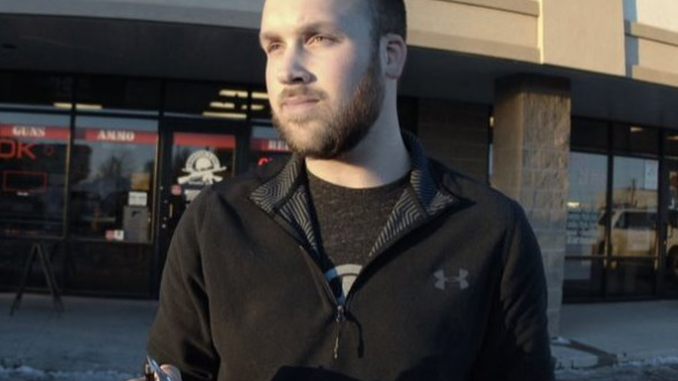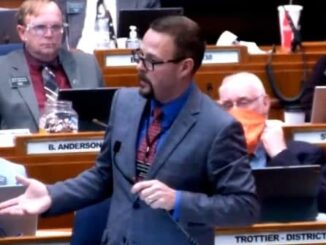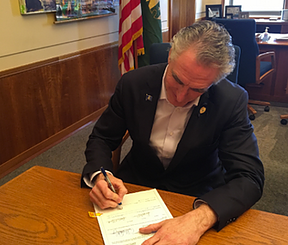
Back in June, I wrote about that fact that one of the interim legislative studies to come out of the recent North Dakota Legislative Session was the “Initiated and Referred Measure Study Commission”. The commission was tasked with the responsibility of undertaking “a comprehensive study of the initiated and referred measure laws of North Dakota”.
As I mentioned in the June article, the initiated and referred measure process is deeply entrenched in North Dakota history. It’s enshrined in Article III of the State Constitution:
“Section 1. While the legislative power of this state shall be vested in a legislative assembly consisting of a senate and a house of representatives, the people reserve the power to propose and enact laws by the initiative, including the call for a constitutional convention; to approve or reject legislative Acts, or parts thereof, by the referendum; to propose and adopt constitutional amendments by the initiative; and to recall certain elected officials. This article is self-executing and all of its provisions are mandatory. Laws may be enacted to facilitate and safeguard, but not to hamper, restrict, or impair these powers .” (Emphasis Added)
Once the commission was established, some of those who favor the use of ballot measures began expressing concern that perhaps the process was being threatened. And for good reason. Some measures have been less than popular with legislators– who make up nearly a third of the commission.
For example, though it failed, in 2012 a large number of legislators had a tizzy over the initiated measure to eliminate property tax. That same year there was also the measure to keep the Fighting Sioux nickname, which also went down in flames. And more recently there was Marsy’s Law and Medical Marijuana– both of which passed, but sparked concerns with some on the issues of out-of-state money and poorly written measures.
Since the 19-member commission was formed, it has met twice– July 31st and September 26th. While the minutes of the July meeting have somewhat of an introductory feel to them, it is the September meeting minutes that may raise the eyebrows of some folks.
For example, commission member and State Representative Scott Louser (R – District 5) may just have what proves to be the winning idea for a reform to the process:
“Representative Louser requested more research on the indirect initiative process and how the rules of the Legislative Assembly might address the process if it were adopted here.” (Emphasis Added)
According to Ballotpedia, the indirect initiative:
“…refers to a process where after sufficient signatures to place a measure on the ballot are collected, the measure is first considered by a state or local legislative body. If the legislative body elects not to pass the proposed new law within a prescribed window of opportunity, the initiative is only then placed on the ballot.
There are at least two key arguments that I see forming in regards to this process– one for and one against:
1) The argument in favor of the indirect initiative might be that this gives the legislature the opportunity to flesh out the pros and cons of an initiated measure – through committees, debate, etc. – and to vote on it.
2) The argument in opposition might say that this gives the legislature too much of an opportunity to stifle the momentum of the petitioners and to drag out the process longer than necessary. Besides, shouldn’t legislators be introducing such ideas for their constituents anyhow? Thereby saving the people from having to go through the extensive process of collecting all the signatures in the first place?
Then we have this paragraph documenting comments made by commission member and State Senator David Hogue (R – District 38):
“In response to a question from Representative Steiner, Senator Hogue said his primary concern is the preservation of self-governance. He said the process has vulnerabilities that should be addressed. He said ensuring North Dakota has a strong process is important to the prosperity of the state. For example, he said, a prior ballot measure would have spent 20 percent of oil and gas revenue on wildlife without taking into account other needs in the state. He requested the Legislative Council staff to research processes in states that limit the number of measures on each ballot, processes in states that require measures containing expenditures to also include taxes, and whether any state allows a legislature to amend a constitutional measure that passes .” (Emphasis Added)
And while the idea of limiting the people – instead of the government – may be troubling to some us, I’m guessing it won’t be nearly as concerning as the suggestion of former President of the State Board of Higher Education and “citizen member” of the commission, Kirsten Diederich:
“Ms. Diederich said the commission may want to discuss whether to eliminate initiated measures altogether.” (Emphasis Added)
Diederich’s comments came at the tail end of the meeting and are exactly what many supporters of ballot measures have feared from the beginning– that the commission would be used as a means of advocating for the elimination of the process entirely.
From my perspective, I don’t believe discussion of elimination of the process will get very far. While it’s obvious that people have various concerns, I just don’t think the appetite is there to get rid of it. Perhaps I’m wrong, but I think the pushback would be too significant from the people.
While the commission can only draft proposals, those in favor of ballot measures should still not sit idly by. As I mentioned, I don’t believe the commission will recommend eliminating ballot measures. But I also don’t believe they’ll come out of this without some type of proposal to reform the process.
There is no notice of when the next meeting will be held, but commission members have been told by Commission Chairman and Judge, William A. Neumann, that “members should begin working on draft proposals at the next meeting”. Then we’ll know for certain the good, the bad, and the ugly of what might come out of all this.
Sources:
1. https://theminutemanblog.com/single-post/2017/06/12/Are-Ballot-Measures-in-Jeopardy
2. http://www.legis.nd.gov/assembly/65-2017/committees/interim/initiated-and-referred-measures-study-commission 3. http://www.legis.nd.gov/assembly/65-2017/interim/19-5022-03000-meeting-minutes.pdf
4. http://www.legis.nd.gov/assembly/65-2017/interim/19-5059-03000-meeting-minutes.pdf
5. https://www.sayanythingblog.com/entry/tag/kirsten-diederich/
6. https://ballotpedia.org/Indirect_initiative





